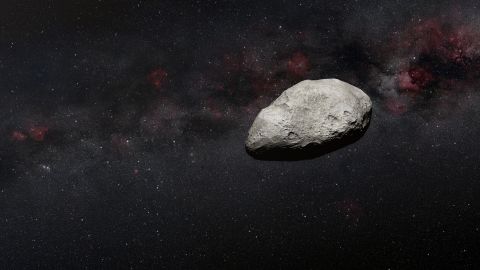A version of this story appeared in CNN’s Wonder Theory science newsletter. To get it in your inbox, sign up for free here.
CNN
—
Buzz started to build about a decade ago around the meat-heavy paleo diet — an approach to eating that’s based on what our Stone Age relatives supposedly liked to consume.
But the truth is that we know relatively little about what our earliest ancestors ate, and what we’ve learned in recent years suggests that there was more than just mammoth steak on the menu.
Groundbreaking new discoveries, including some featured in this week’s CNN science newsletter, have revealed that the diets of early humans were surprisingly varied and that those ancient meals may have involved more sophisticated preparations than previously thought.
Neanderthals who lived 90,000 years ago in a seafront cave in what’s now Portugal regularly caught and ate crabs, roasting them on coals, according to a new study.
The finding is significant because it builds upon evidence challenging the long-standing notion that a taste for seafood — rich in omega-3 fatty acids that are important for brain growth — was one of the unique factors that made our own species, Homo sapiens, cognitively smarter than our extinct Neanderthal counterparts.
Meanwhile, in Kenya, another archaeological dig has revealed that early hominins feasted on hippo 2.9 million years ago, butchering the carcasses with the help of distinctive and unexpected implements.
The discovery may shed light on a key question in human evolution: Who first used stone tools?
In the HBO show “The Last of Us,” characters identify zombies among them by the fungi that burst from their bodies. Those fungal parasites manipulate their hosts to infect the communities around them, creating more monsters as a consequence. (HBO, like CNN, is a unit of Warner Bros. Discovery.)
In real life, the type of fungus that inspired the story, Ophiocordyceps, affects insects and does not cause problems for people.
However, the threat from fungal pathogens is increasing, experts say, and may grow much worse in a warmer, wetter and sicker world.
The climate crisis may also be contributing to the rise of drug-resistant superbugs, a new UN report has warned, with rising temperatures increasing the rate of bacterial growth and the rate of the spread of antibiotic-resistant genes between microorganisms.
Codebreakers have revealed the secrets within a lost trove of letters written by Mary, Queen of Scots, between 1578 and 1584 — during the 19-year period she was imprisoned by her cousin Queen Elizabeth I.
Written in cipher, the 57 letters from Mary Stuart to the French ambassador to England had been tucked away, wrongly labeled, in France’s national library.
The contents of the letters “will be a literary and historical sensation,” according to Dr. John Guy, a fellow in history at Clare College in Cambridge, England, and author of “Queen of Scots: The True Life of Mary Stuart.”
Just as impressive is how researchers deciphered the letters — the process involved computer algorithms, linguistic analysis and manual codebreaking techniques.
Geoscientists know little about the innermost reaches of our planet, but what happens deep beneath our feet is a source of fascination for many people. News last month that Earth’s inner core may have stopped turning was CNN’s most read science story in January.
Now, scientists have detected a previously unknown layer of partially molten rock 100 miles (161 kilometers) below Earth’s crust.
The revelation could help researchers learn more about the movements of the planet’s tectonic plates, which not only create mountains and earthquakes like this week’s devastating Turkey-Syria quake but also contributed to forming environments with the right chemical and physical conditions to support life in Earth’s earliest days.
Meanwhile, around 15 million people are at risk of experiencing “inland tsunamis,” according to a new report on glacial lakes.

Astronomers have spotted 12 previously unknown moons orbiting Jupiter, bringing its total number of confirmed moons to 92, the most of any planet in the solar system. The largest ones of the new batch will get names later this year.
The moons weren’t the only newly identified celestial bodies made public this week. An asteroid the size of Rome’s Colosseum photobombed an image taken by the James Webb Space Telescope, and astronomers found a dwarf planet with a ring that defies what’s known about celestial mechanics.
Also hanging out in the cosmic wilderness is a cherry red Tesla roadster launched into space five years ago by Elon Musk. To keep tabs on the sports car’s predicted location, NASA has an entry for the vehicle in the Horizons database for tracking space objects, but it’s difficult to say where the vehicle is with absolute certainty — or whether it’s still in one piece.
Check out these insightful stories:
— The first Black woman to join an International Space Station crew told CNN what inspired her to become an astronaut.
— How are scientists kept fed and happy in one of the most remote places on Earth? (Hint: It involves cheese.)
— See the snow leopard image that won in the wildlife photography awards.